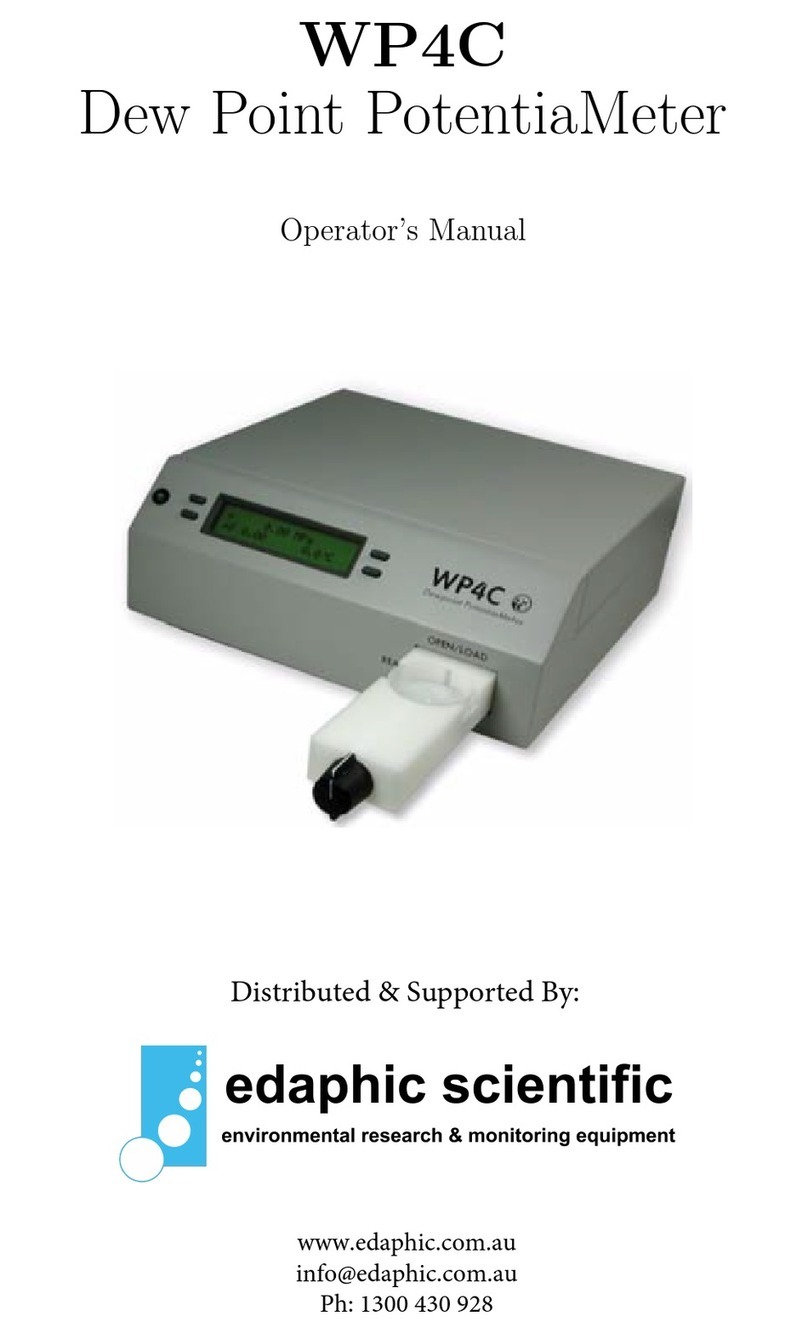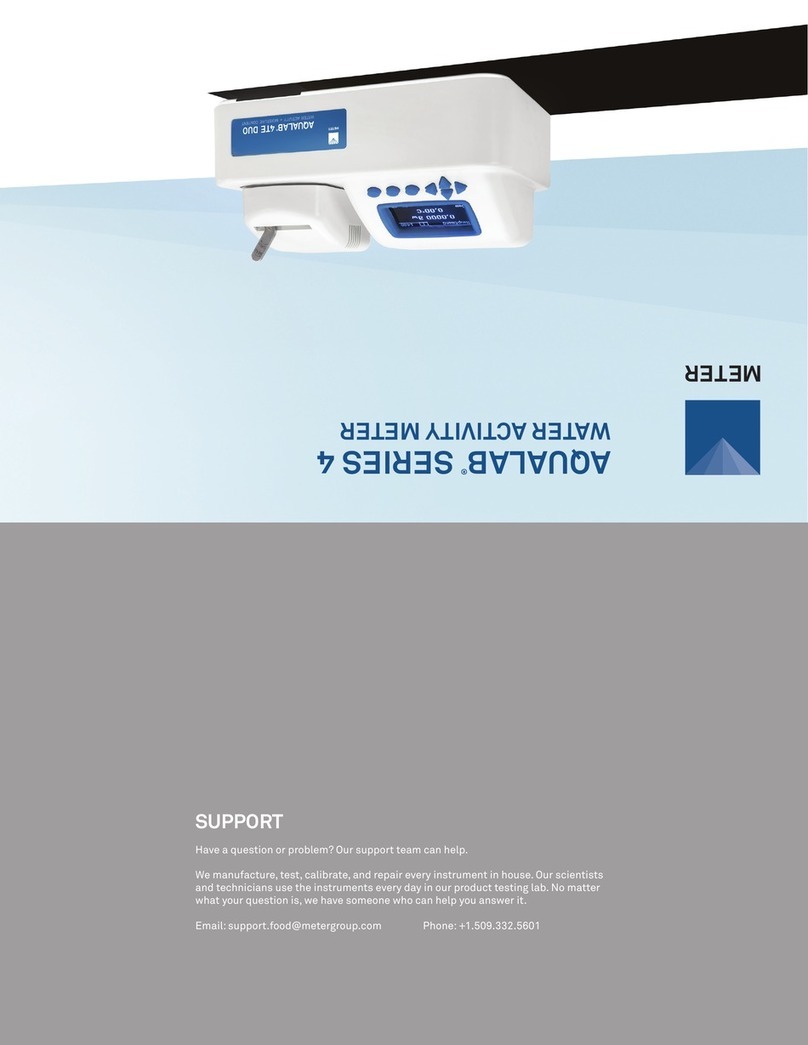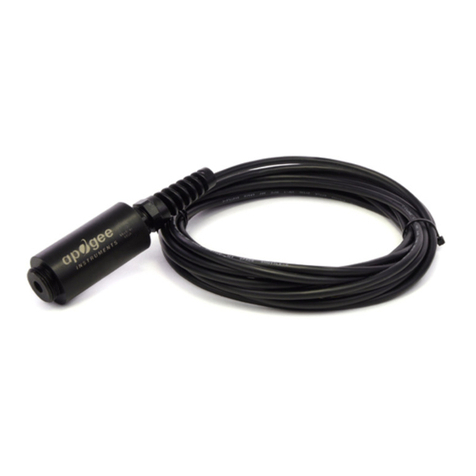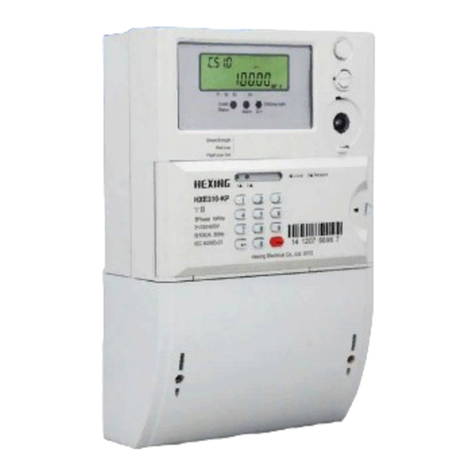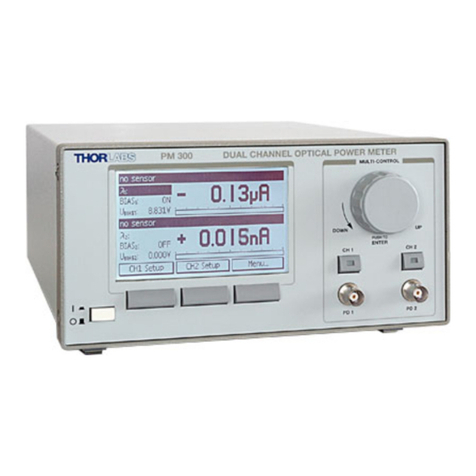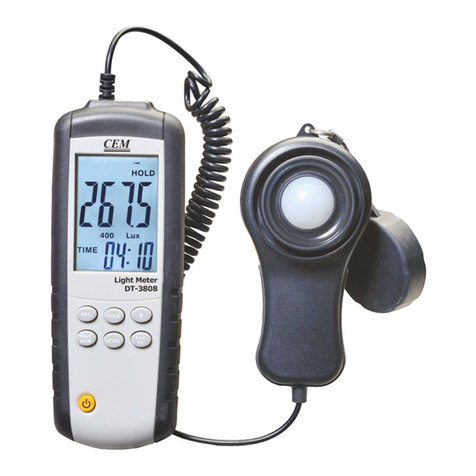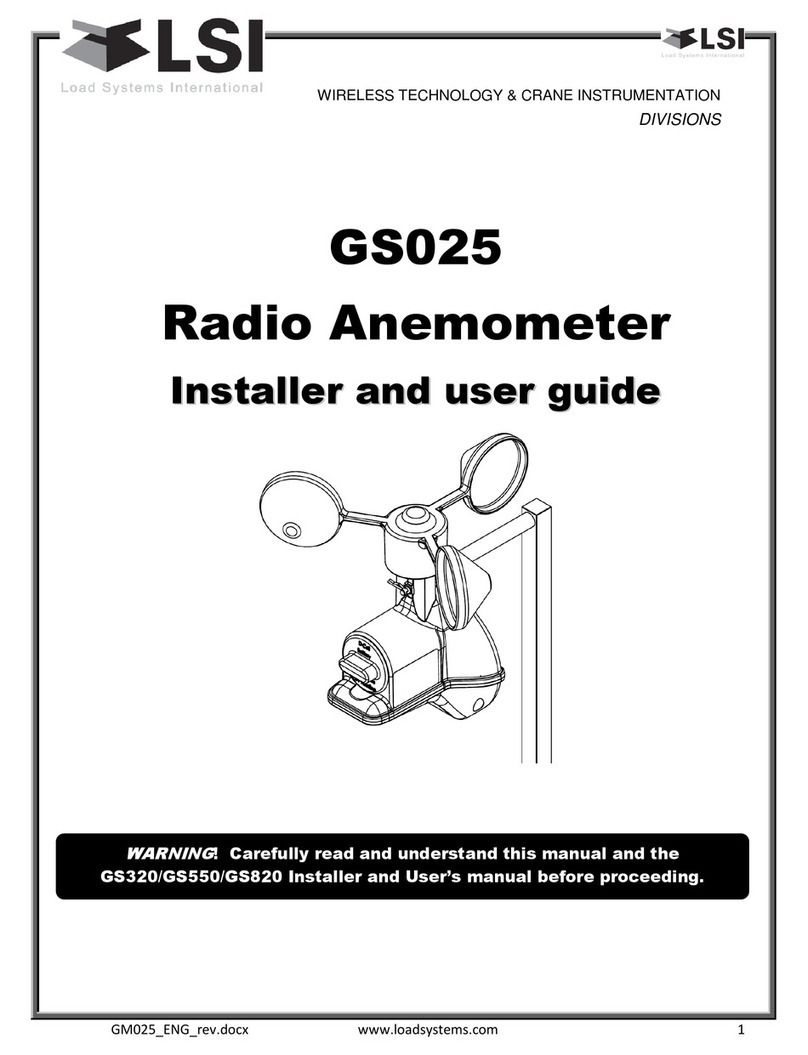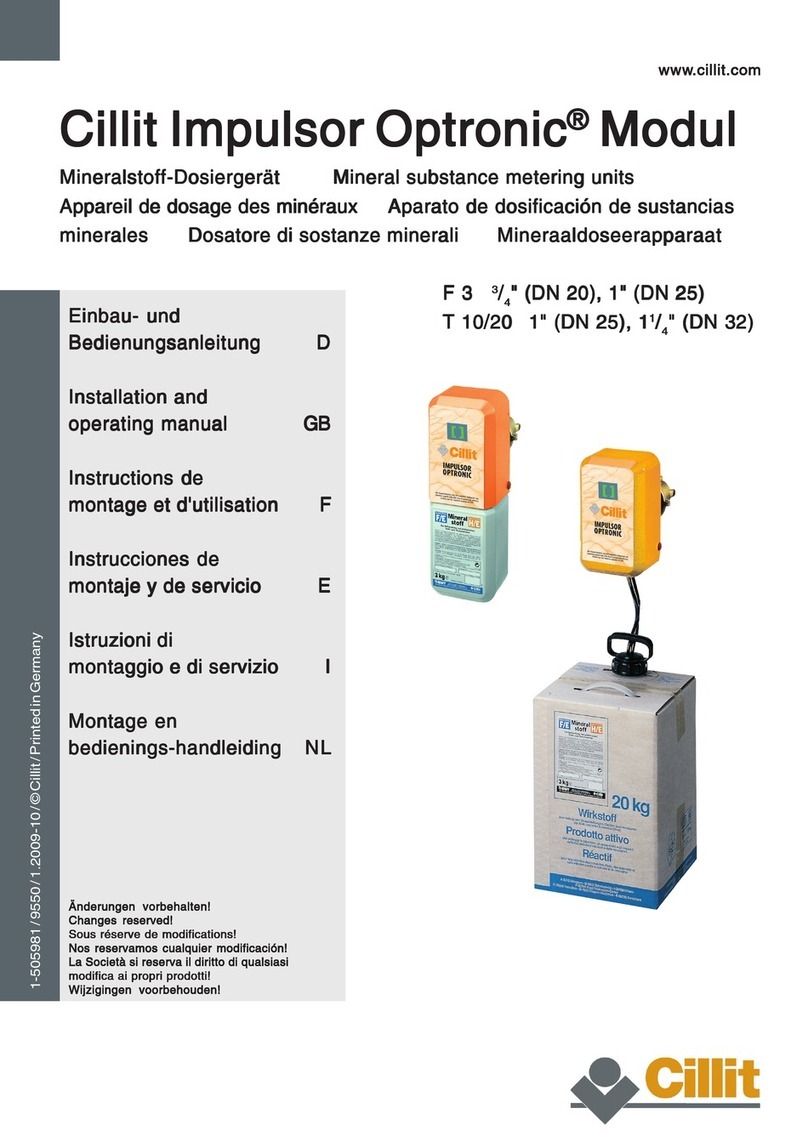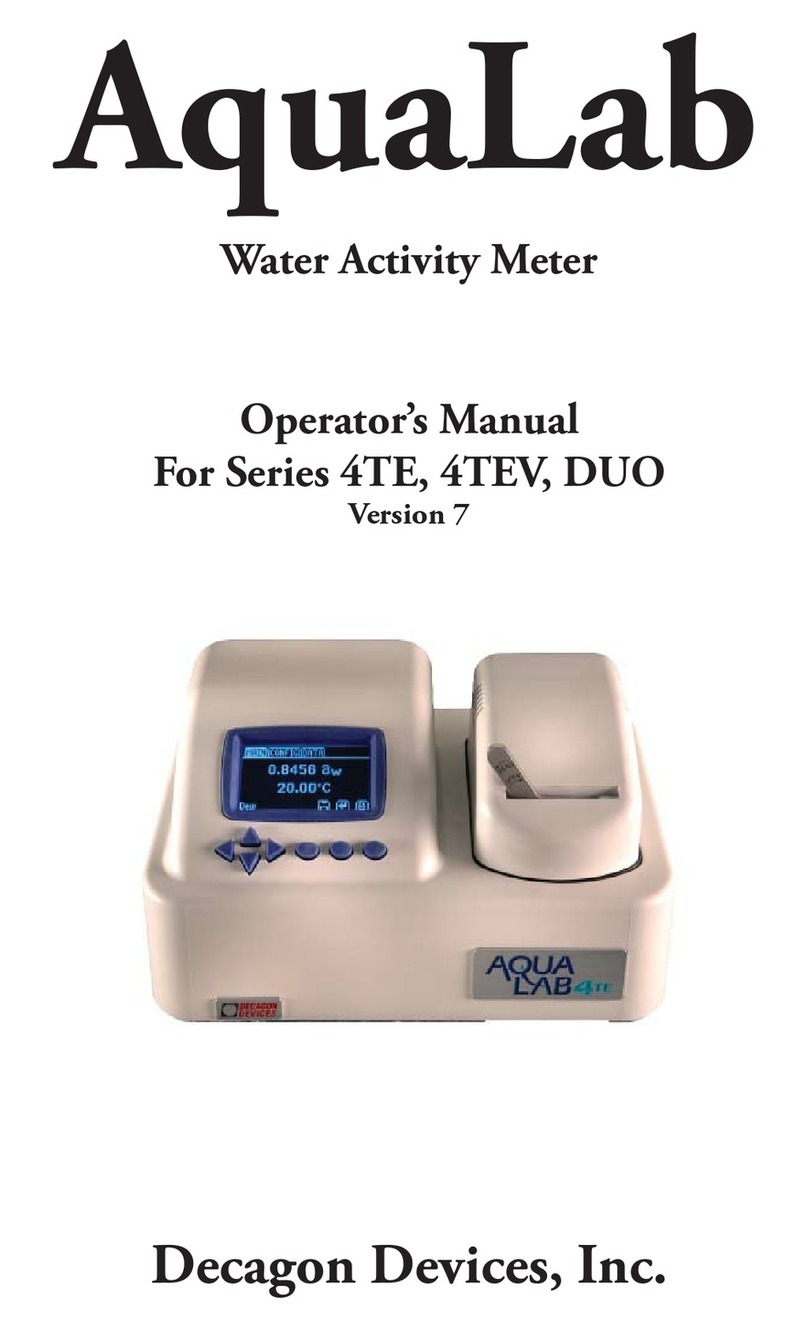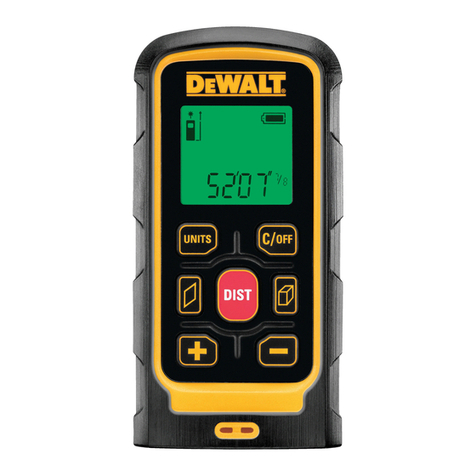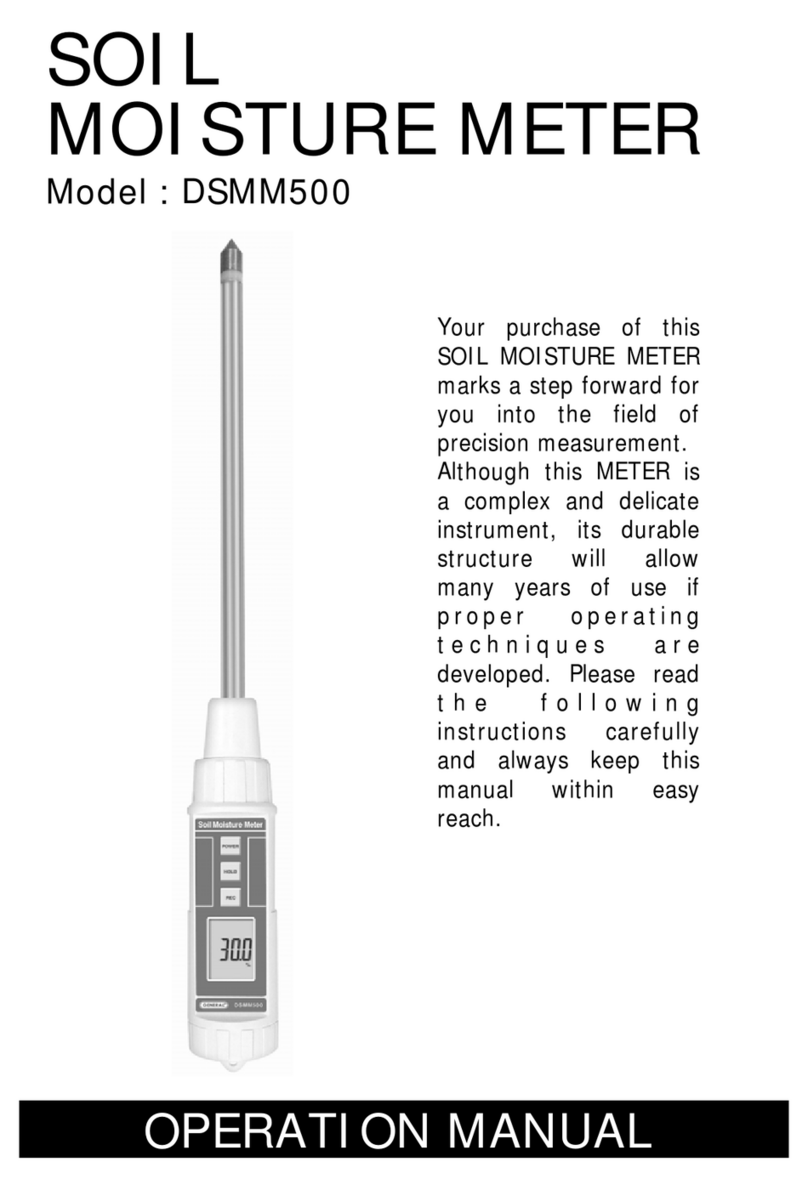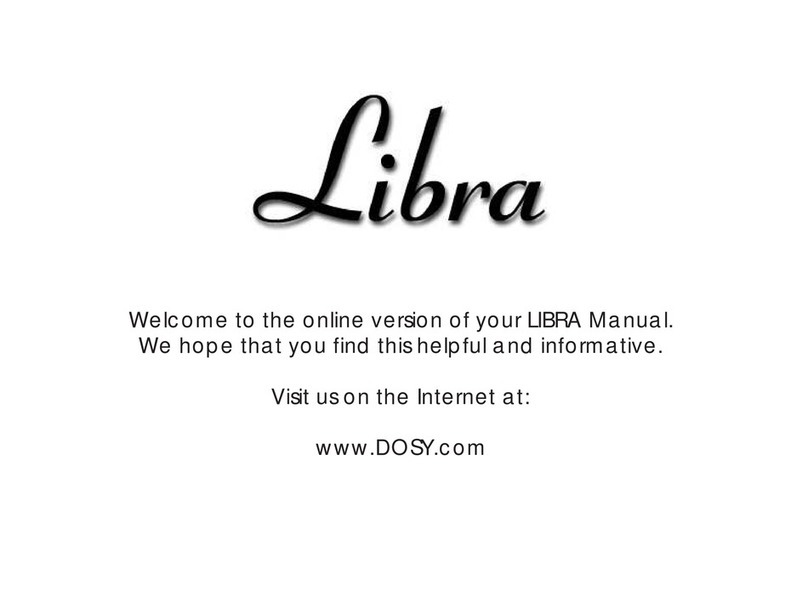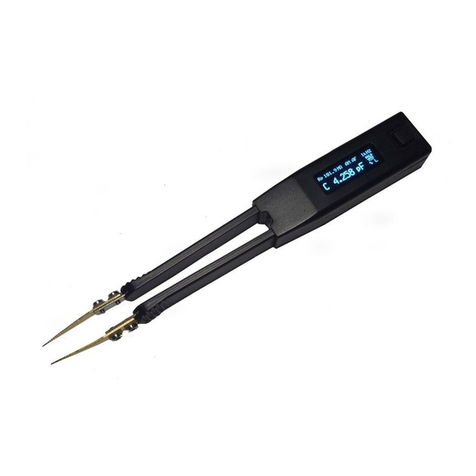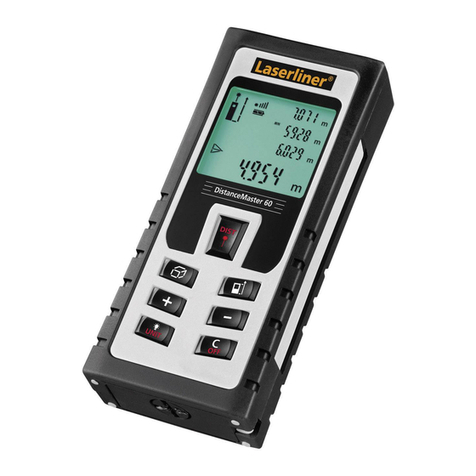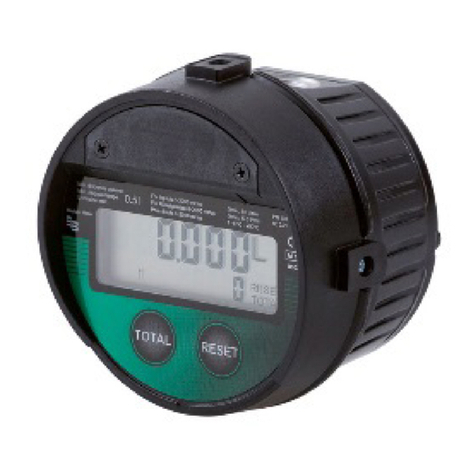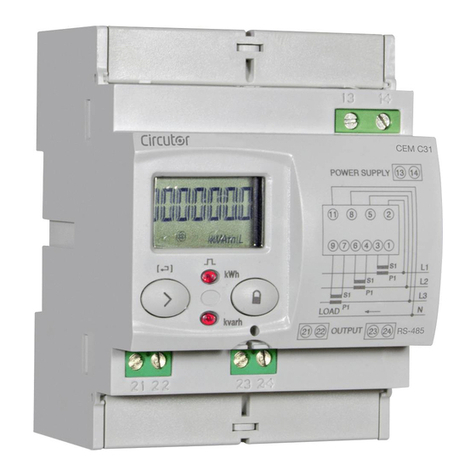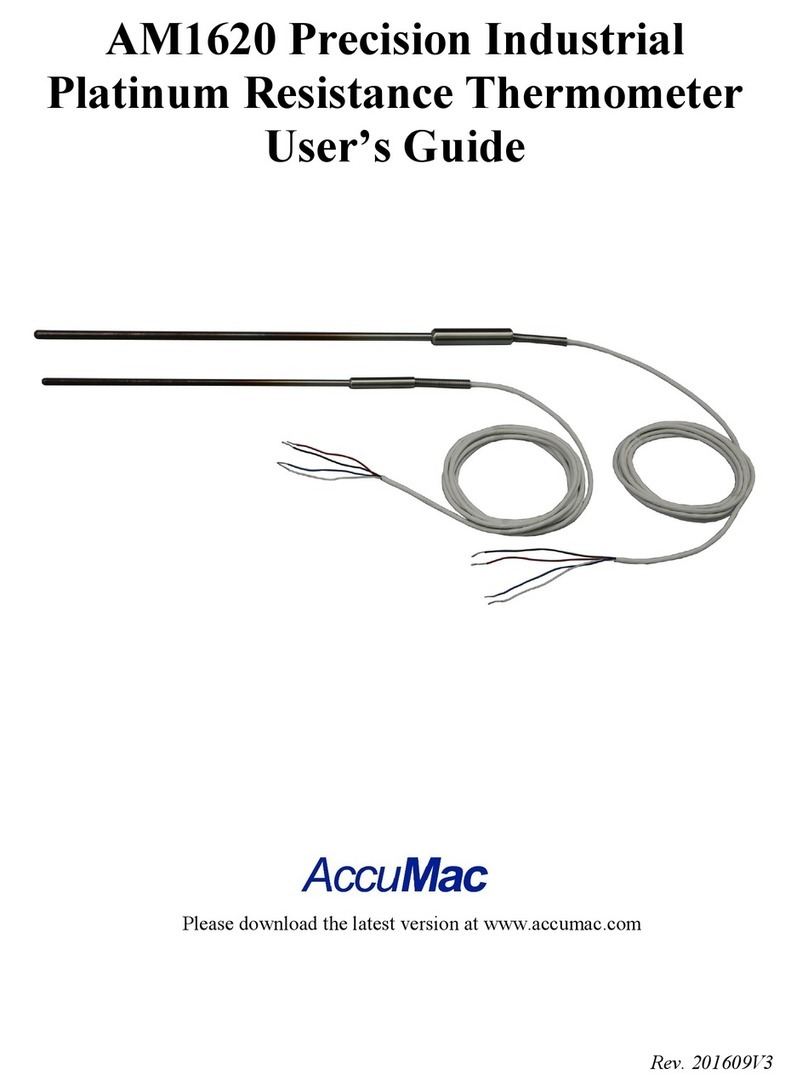METER GROUP AquaLab 4TE User manual

AQUALAB® SERIES 4

i
TABLE OF CONTENTS
1. Introduction.............................................................................................. 1
2. Operation ...................................................................................................2
2.1 Installation ................................................................................................2
2.2 Sample Preparation ................................................................................... 3
2.2.1 Sample Composition........................................................................4
2.2.2 Sample Temperature........................................................................ 6
2.3 Taking a Reading ........................................................................................7
2.4 Viewing Data .............................................................................................. 9
2.5 Using Moisture Content (AQUALAB DUO Only).......................................... 10
2.5.1 Obtaining Product Isotherm Models .............................................. 11
2.5.2 Loading and Organizing Product Isotherm Models......................... 11
2.5.3 Measuring Moisture Content ......................................................... 12
2.5.4 Moisture Content Model Offset...................................................... 14
2.5.5 Restore Moisture Content Default Settings ................................... 17
2.5.6 Deleting Models............................................................................. 19
3. System....................................................................................................... 21
3.1 Specifications.......................................................................................... 21
3.2 Components ............................................................................................ 22
3.2.1 Cords and Cables ........................................................................... 23
3.2.2 Sample Chamber............................................................................ 23
3.2.3 Buttons.......................................................................................... 24
3.2.4 Display Screen ............................................................................... 25
13484-14
6.15.2018

ii
3.3 Computer Interface.................................................................................. 36
3.3.1 AquaLink 4 Software...................................................................... 36
3.3.2 Using a Terminal Program .............................................................. 37
3.4 Theory...................................................................................................... 37
3.4.1 Moisture Content........................................................................... 37
3.4.2 Water Activity ................................................................................ 38
3.4.3 Chilled-Mirror Dew Point Limitations............................................. 40
3.4.4 Water Potential .............................................................................. 41
3.4.5 Sorption Isotherms ........................................................................ 41
4. Service....................................................................................................... 43
4.1 Verification and Calibration................................................................... 43
4.1.1 Water Activity Verification ............................................................. 43
4.1.2 Linear Offset .................................................................................. 46
4.1.3 Multipoint Calibration (TEV Only)................................................... 48
4.1.4 Restore Factory Defaults ............................................................... 51
4.2 Cleaning................................................................................................... 52
4.2.1 Cleaning Kit ................................................................................... 53
4.2.2 AQUALAB 4TEV Special Considerations ......................................... 53
4.2.3 Cleaning Procedure........................................................................ 53
4.3 Maintenance Packages............................................................................ 55
4.4 Repair ...................................................................................................... 55
4.5 Troubleshooting....................................................................................... 56
4.6 Customer Support.................................................................................... 59
4.7 Terms and Conditions .............................................................................. 59
Reference....................................................................................................... 60
Index ................................................................................................................. 61


1
1. INTRODUCTION
Thank you for choosing the AQUALAB®4 Series Water Activity Meter from METER Group.
AQUALAB is the most accurate and most reliable instrument available for measuring water
activity (aw ).
The AQUALAB 4 Series includes four models:
• AQUALAB 4TE uses a chilled-mirror dew point sensor and thermoelectric (Peltier)
components to maintain a user-selectable internal temperature.
• AQUALAB 4TEV uses both a chilled-mirror dew point sensor and a capacitance sensor for
measuring nonvolatile and volatile substances, respectively. Either sensor is selected using
the instrument menu system.
• AQUALAB 4TE DUO uses a chilled-mirror dew point sensor and programmed models
obtained from isotherm data to give the user both water activity and moisture content
simultaneously in 5 min or less.
• AQUALAB 4TEV DUO uses both a chilled-mirror dew point sensor or capacitance sensor
as well as programmed models obtained from isotherm data to give the user both water
activity and moisture content simultaneously for samples containing both nonvolatile and
volatilesubstances.
This manual includes instructions for setting up, verifying the calibration, preparing samples,
taking readings, and maintaining AQUALAB instruments.
Verify all instrument contents shipped and appear in good condition:
• AQUALAB Water Activity Meter
• Calibration certificate
• Power cord
• USB A to USB B cable
• 50 disposable sample cups
• AQUALAB Cleaning Kit
• Two vials each of the following verification solutions:
0.760 aw6.00 mol/kg NaCl
0.500 aw8.57 mol/kg LiCl
0.250 aw13.41 mol/kg LiCl

2
OPERATION
2. OPERATION
Please read all instructions before operating the AQUALAB to ensure it performs to its
full potential.
Please observe the following considerations carefully.
• Only allow personnel qualified by METER to carry out service work on the electrical
components.
• Never remove the cover of the instrument. There are no parts inside the housing that can be
serviced or replaced by the user.
WARNING: There is a risk of damaging the instrument or of causing serious injury if live components are touched.
• Only operate this instrument with a main power voltage specified (100 to 240 V AC).
• Plug the instrument into a grounded outlet or power strip.
• Only use the fuse type and rating specified for this instrument (Section3.1).
If the instrument is used in a manner not specified by the manufacturer, the protection
provided by the equipment may be impaired.
PRECAUTIONS
METER sensors are built to the highest standards, but misuse, improper protection,
or improper installation may damage the sensor and possibly void the manufacturer’s
warranty. Before integrating AQUALAB into a system, follow the recommended installation
instructions and arrange proper protections to safeguard the instrument from damage.
2.1 INSTALLATION
Follow the steps listed in Table 1 to set up the AQUALAB.
Table 1 Installation
Preparation
Select Clean, Level Location
Select a location where the temperature remains fairly stable to avoid
temperature changes that can affect accuracy (away from air conditioner and
heater vents, open windows, etc.).
Observe clean practices to prevent contamination of the sample chamber.
Maintain a level surface to reduce the chance of spilling sample material and
contaminating the sample chamber.

3
AQUALAB
Table 1 Installation (continued)
Installation
Plug In Instrument
Plug the power cord into the back of the AQUALAB unit and into an outlet.
Only use the supplied power cord or one rated for AQUALAB 4 and certied for
the country of use. The cord must be a minimum of 18 AWG and have a rating
for 10 A or greater.
WARNING: An incorrect main power voltage can damage the instrument.
Turn the Unit ON.
Allow the AQUALAB a 15-min warm-up period to ensure accurate readings.
2.2 SAMPLE PREPARATION
Proper sample preparation is important to keep the AQUALAB clean and achieve repeatable
results. Carefully prepare and load samples to lengthen time between cleanings and help
avoid downtime. Be consistent in sample preparation methods (e.g., crush, grind, slice the
sample) to obtain reproducible results.
More specific considerations regarding sample composition and sample temperature are
discussed in Section2.2.1 and Section2.2.2, respectively.
Follow the steps listed below to prepare samples:
1. Make sure the sample to be measured is homogeneous.
Multicomponent samples (e.g., mufns with raisins) or samples that have outside
coatings (like deep-fried, breaded foods) can be measured, but they need to have
representative portions in the cup and may take longer than other sample types
toequilibrate.
2. Place the sample in a disposable sample cup.
a. Completely cover the bottom of the cup, if possible, to provide enough sample to get
an accurate reading.
The AQUALAB is able to accurately measure a sample that does not (or cannot) cover
the bottom of the cup. For example, raisins only need to be placed in the cup and do
not need to be attened to cover the bottom.
A larger sample surface area increases instrument efciency by providing more
stable infrared sample temperatures. It also speeds up the reading by shortening the
time needed to reach vapor equilibrium.
b. Do not fill the sample cup more than half full.
Overlled cups can contaminate the chamber and do not make the readings faster or
more accurate.
3. Wipe any excess sample material from the rim and outside of the sample cup with a
clean KIMWIPES®tissue.

4
OPERATION
Material left on the rim or the outside of the cup can contaminate the chamber and be
transferred to subsequent samples.
4. If a sample cannot be measured immediately, put the disposable sample cup lid on the
cup to restrict water transfer.
For longer term storage of no more than 4 h, seal the lid by placing tape or Paralm®
laboratory lm completely around the cup to lid junction.
2.2.1 SAMPLE COMPOSITION
The nature of some samples results in longer reading times. These materials may need
additional preparation to ensure accurate readings. Contact Customer Support for
questions on sample composition.
Use the following steps to determine if further sample preparation is necessary:
1. Take several readings of the sample to see if the readings (awand time) stabilize
(Section2.3).
2. If the readings take less than 6 min to stabilize, the sample can be handled normally.
If the readings take longer than 6 min, remove the sample and take a reading of a
verication standard (Section4.1.1).
3. If the verication standard takes less than 6 min to test, the sample itself is causing the
long read time. Refer to the following sections for pertinent sampling considerations.
If the verication standard also takes longer than 6 min to test, the chamber may
be dirty and will need to be cleaned (Section4.2). Retest the sample after cleaning
thechamber.
2.2.1.1. COATED AND DRIED SAMPLES
Samples with high sugar or fat coatings often require multiple readings, because it
equilibrates very slowly with the sample chamber.
Crush or slice the sample before sampling to reduce the time needed to take a water
activity reading for coated or dried samples. This increases the surface area of the sample,
thus decreasing reading times. However, modifying some samples may alter their water
activityreadings.
For example, a candy may have a soft chocolate center and a hard outer coating. The water
activity reading for the center and the outer coating are different, so one would need to
evaluate which part of the sample needed to be measured before crushing it. When the
candy is crushed, the water activity represents the average water activity of the entire
sample; whereas leaving the candy whole gives a reading for the coating, which may act as a
barrier to the center.
To reduce test time when testing whole samples, see Section3.2.4.2 to set Low-Emitting
mode.

5
AQUALAB
2.2.1.2. LOW WATER-EMITTING SAMPLES
Some extremely dry, dehydrated, highly viscous, water-in-oil emulsions (e.g., butter), high
fat, or glassy compositions may require multiple readings because of their slow water-
emitting properties. This is because the slow emission of water decreases the change in
water activity sufficiently that the instrument determines the test to be complete, even
though changes in water activity are still occurring.
The most effective way to test these types of samples is to run them in the AQUALAB using
Continuous or Custom mode and wait for the water activity readings to stabilize.
For faster reading, it is important to have the relative humidity of the chamber at or below
the water activity of these types of samples. This causes the sample to release water to the
vapor phase and equilibrate with the chamber. If the relative humidity of the headspace is
greater than the water activity of the sample, the sample will require a long period of time to
reach equilibrium.
To reduce test time when testing low water-emitting samples, see Section3.2.4.2 to set
Low-Emitting mode.
2.2.1.3. VOLATILE SAMPLES
Samples with certain volatiles in high enough concentrations may give inaccurate water
activity values in the AQUALAB 4TE and AQUALAB 4TE DUO models. Volatiles condense on
the mirror during the reading process but do not evaporate from the mirror as water does.
As a result, the reading on samples with volatiles may not be accurate. The concentration
of volatiles that causes interference is variable and matrix dependent.
The AQUALAB 4TEV measures volatiles such as propylene glycol and ethanol. The AQUALAB
4TEV contains both a chilled-mirror dew point and a capacitance sensor. The capacitance
sensor has a lower accuracy of ±0.015 awthan the dew point sensor, which has an accuracy
of ±0.003 aw.
To determine if volatiles are a problem, compare dew point readings to capacitance readings.
If the dew point readings are >0.018 awhigher than the capacitance readings, volatiles are
likely a problem and the AQUALAB 4TEV, AQUALAB 4TEV DUO, or AQUALAB TDL will need to be
used for the sample.
After measuring volatiles with the capacitance sensor, clean the chamber (Section4.2),
place charcoal in the chamber, and seal for a minimum of 5 min before switching to the dew
point sensor.
2.2.1.4. LOW WATER ACTIVITY
A sample’s water activity value may be below the cooling capacity of the AQUALAB. The
AQUALAB will display an error message indicating the lowest reading it attained on that
particular sample. The AQUALAB may also give the error message even if the sample is not
below 0.03 aw. Section4.5 provides possible solutions to the error message.

6
OPERATION
If a sample has a water activity of <0.03 aw, a < symbol in the Measurement tab indicates the
sample is too dry to be accurately measured by the AQUALAB (Figure1).
Figure1 Low water activity reading
If the measured awappears lower than the known sample water activity, the instrument
sensors may have been contaminated and need to be cleaned or serviced (Section4.2).
2.2.2 SAMPLE TEMPERATURE
The ambient temperature of the AQUALAB should be between 15 and 50 °C. The AQUALAB
4TE and AQUALAB 4TEV have internal temperature control capabilities that enable them to
read samples at temperatures different from the ambient temperature, but no higher than
50 °C and no lower than 15 °C.
Samples that are more than 4 °C colder or warmer than the instrument chamber
temperature need to equilibrate to instrument temperature before taking a reading, ideally
within 1 or 2 °C of the chamber temperature. Rapid changes in temperature over short
periods of time causes the water activity readings to rise or fall until the temperature
stabilizes. Proceed with normal measurements when the temperature stabilizes within an
optimal 1 or 2 °C of the chamber temperature.
High water activity samples that are warmer than the chamber temperature can cause
condensation inside the measuring chamber, which adversely affects subsequent readings.
A warning message appears if the sample temperature is more than 4 °C above chamber
temperature (Figure2).
Figure2 Sample is too hot! message

7
AQUALAB
If this error message appears,
1. Remove the sample from the instrument.
2. Place a lid on the cup.
3. Allow the sample to cool to within 4 °C of the instrument before measuring.
To check the differences in temperature between the sample and the chamber prior to
beginning a reading, set the sample in the chamber, close the lid without latching it, and
press the RIGHT or LEFT button. Figure3 provides an example of this screen.
Figure3 Temperature difference between sample and sample chamber
2.3 TAKING A READING
The AQUALAB provides readings in 5 min or less. Readings are reliable, providing ±0.003 aw
accuracy.
CAUTIONS
• Never leave a sample in the AQUALAB after a reading has been taken. The sample may spill
and contaminate the instrument chamber if the instrument is accidentally moved or jolted.
• Never move the instrument after a sample has been loaded. Movement may cause the
sample material to spill and contaminate the sample chamber.
• Do not measure a sample that has a temperature greater than ±4 °C than the AQUALAB
chamber (Section2.2.2). Remove the sample until it is at room temperature.
NOTE: After measuring volatiles with the capacitance sensor, clean the chamber (Section4.2), place charcoal in the
chamber, and seal for a minimum of 5 min before switching to the dew point sensor.
Perform the following steps to take a reading.
1. Ensure the AQUALAB is plugged in and turned on.
The splash screen will appear, followed by the main Measurement tab (Section3.2.4.1).
2. For AQUALAB DUO instruments (Section2.5), use the UP and DOWN buttons to scroll
through all available product models that may be used (Figure4).
The moisture content value adjusts based on the selected model.

8
OPERATION
Figure4 Measurement screen for AQUALAB DUO Milk Powder product model
3. Verify cleanliness (Section4.2), calibration (Section4.1), and sample preparation
(Section2.2).
NOTE: The device fan can blow powdery substances; always verify the cleanliness of the sample chamber before
reading a new sample.
4. Move the chamber lever to the OPEN position and lift the chamber lid.
5. Check the top lip and outside surfaces of the sample cup to ensure they are free from
sample residue and conrm the sample cup is not overlled.
NOTE: Overfilling the sample cup may contaminate the chamber sensors.
The sample cup lid must be removed for correct functionality.
6. Place the prepared sample cup in the chamber.
7. Close the chamber lid.
8. Move the lever to the READ position to seal the sample chamber. The reading will
automatically start.
In 1 to 2 min, the rst measurement will display on the screen (this is an intermediate
reading). The instrument crosses the dew threshold numerous times to ensure
equilibrium and the accuracy of readings. Length of read times may vary depending
on temperature differences between the chamber and the sample as well as on other
properties of the sample (Section2.2). The default AQUALAB reading cycle continues
until the rates of change of three consecutive intermediate readings are <0.0005 awof
each other.
When the instrument has nished its read cycle, results will display. The SAVE icon
replaces the spinning measurement icon, and, if enabled, a series of beeps sounds. The
results will include the water activity, read time, temperature, and, for AQUALAB DUO
instruments (Section2.5), moisture content for the selected product model (Figure5).
NOTE: Autosave only saves the moisture content value of the model selected at the end of the reading. Overwrite
the autosave by selecting the correct model using the UP and DOWN buttons and selecting SAVE.

9
AQUALAB
Figure5 Completed test results with both water activity and moisture content
9. Autosave (default setting) retains the data without any annotation (Section3.2.4.2).
To add an annotation, select SAVE, add desired letters, and select SAVE again (Figure6).
Figure6 Keyboard screen to annotate data results
2.4 VIEWING DATA
To view prior test results, use the following steps:
1. Press MENU to navigate to the Data tab (Figure7).
Figure7 Data tab
2. Select ENTER.
3. Scroll through the list of saved tests using UP and DOWN (to move one item at a time) or
RIGHT and LEFT (to move a page at a time).

10
OPERATION
Figure8 List of saved tests
4. Select ENTER.
The detailed test results screen will appear (Figure9). Tests can also be scrolled through
using the arrow buttons on this detailed screen.
Figure9 Detailed test results screen
5. Select OK to return to the list of tests.
6. Select CANCEL to return to the Data tab.
2.5 USING MOISTURE CONTENT (AQUALAB DUO ONLY)
The relationship between water activity and moisture content is called the moisture
sorption isotherm, and it is complex and unique to each product type.
AQUALAB DUO models generate water activity values and moisture content. The DUO models
use preloaded product-specific isotherm models to calculate moisture content and present
it on the screen with the water activity (Figure10). The AQUALAB 4TE and AQUALAB 4TEV can
be upgraded to an AQUALAB 4TE DUO and AQUALAB 4TEV DUO, respectively.

11
AQUALAB
Figure10 AQUALAB DUO display with water activity and moisture content readings
2.5.1 OBTAINING PRODUCT ISOTHERM MODELS
The isotherm relationship for each product is unique, and each product isotherm model
must be determined experimentally prior to testing moisture content with the AQUALAB
DUO.
There are several strategies that can be used to generate models. Please contact Customer
Support for information on model development.
2.5.2 LOADING AND ORGANIZING PRODUCT ISOTHERM MODELS
A product model must be loaded onto the AQUALAB DUO before it can calculate
moisture content. Models can be loaded onto the instrument by METER or by using
the AquaLink4 software (Section3.3.1). As many as 100 models can be stored on the
instrument.
The AquaLink 4 software uses a model loading tool to add and remove product models from
the AQUALAB DUO, allowing the user to control and organize product models.
The following steps explain how to load new models:
1. Download AquaLink 4 software from software.metergroup.com onto a computer.
2. Save the model les onto the same computer.
3. Open AquaLink software.
4. Connect the AQUALAB to the computer using the USB cord (or an RS-232 cord).
5. Turn the AQUALAB on.
6. In the AquaLink window, select the appropriate COM port from the dropdown menu.
7. Click Connect.
When the instrument is connected, the button will change to Disconnect.
8. Click Models.

12
OPERATION
The Model Manager window will show all current models (Figure11). If no models have
been loaded, the window will be empty.
Figure11 AquaLink 4 model loading tool
9. Click Import.
10. Navigate to the model saved on the computer and select.
Each model will need to be imported individually. The models should now show up in the
Model Manager window.
11. Click in the Sync box next to each model name that will be uploaded to the AQUALAB.
12. Click Apply.
13. After a few seconds, use UP and DOWN on the AQUALAB instrument to test if the
instrument can scroll through the new models (visible at the top of the Measurement
tab). The display screen should also have a placeholder for moisture content
measurements.
14. In the AquaLink window, click Disconnect.
15. Close the AquaLink program.
16. Unplug the AQUALAB from the computer.
2.5.3 MEASURING MOISTURE CONTENT
With product models loaded onto the instrument, the AQUALAB DUO can generate moisture
content and water activity simultaneously while taking a reading.
1. Press MENU to navigate to the Configuration tab (Figure12).

13
AQUALAB
Figure12 Changing moisture content model on the Conguration tab
2. Select %Moisture.
A list of available models appears, organized by name (Figure13).
Figure13 Product models for moisture content
3. Select the model for the product to be analyzed.
If the listed models do not apply, select None. No moisture content will appear on the
Measurement tab.
4. Select SAVE.
5. Navigate to the Measurement tab.
6. Take a reading (Section2.3).
The moisture content measurement (%MC) will appear below the water activity measurement
(Figure14) in the test results.

14
OPERATION
Figure14 AQUALAB DUO display with water activity and moisture content readings
2.5.4 MOISTURE CONTENT MODEL OFFSET
The AQUALAB DUO calculates moisture content values based on water activity readings
by utilizing models stored within the instrument. Because moisture content results vary
between reference methods, it is important to ensure that the model in the instrument
correlates well with the values obtained from the selected reference method (e.g., Karl
Fischer titration or oven loss on drying). Moisture content differences among various
methods are usually linear and can be easily corrected with a linear offset. Therefore, if
moisture contents calculated with the AQUALAB DUO instrument are not agreeing with the
reference method, the problem can likely be addressed by adjusting a linear offset.
Reference methods can differ between laboratories, so check for a linear offset upon receipt
of a new isotherm model from METER. In addition, the linear offset should be adjusted if
moisture contents calculated by the AQUALAB DUO instrument are consistently higher or
lower for a product than reference method values over several samples.
The following steps describe how to adjust for linear offset or how to create a new model
based off an old model:
1. Ensure the instrument is verified (Section4.1).
2. Collect three subsamples of the product for analysis.
3. Place one subsample into a sample cup (Section2.2).
4. Cover sample cup with a lid to limit exposure to ambient conditions.
5. Use the reference method to determine the average moisture content of the other
twosubsamples.
6. On the AQUALAB, press MENU to navigate to the Conguration tab.
7. Select Calibration.
8. Select %Moisture from the list of calibration types (Figure15).
NOTE: If %Moisture is not an option,the instrument may not be an AQUALAB DUO.Contact Customer Support.

15
AQUALAB
Figure15 Select %Moisture on the Calibration tab
The %Moisture Calibration screen will appear (Figure16).
Figure16 %Moisture Calibration screen
9. If creating an existing model, select New.
If editing an existing model, select Edit.
10. Scroll through the reference models for the desired product (Figure17).
Figure17 Moisture content model list
11. Select ENTER.
12. Select Start (Figure18).

16
OPERATION
Figure18 Start test
13. Place a sample in the sample chamber when prompted (Figure19).
Figure19 Prompt to place sample in chamber
14. Remove the lid from the sample cup prepared in step3 and place into the chamber.
15. Close and latch the lid.
16. Select OK to begin a reading.
Once the reading is complete, the measured water activity as well as the moisture
content based on the target model will display on the screen.
17. Adjust the moisture content value using UP and DOWN until it matches the average
moisture content value obtained from the reference method in step5 (Figure20).
Figure20 Adjust the moisture content value to match the reference method
18. Select SAVE.
This manual suits for next models
3
Table of contents
Other METER GROUP Measuring Instrument manuals
